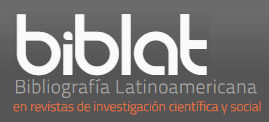Gender identity and religious meanings in queer film poster
DOI:
https://doi.org/10.5433/1519-5392.2018v18n2p77Keywords:
Gender ideology, Multimodality, Religiosity, Queer cinema, Critical discourse analysis.Abstract
This issue’s main theme are the implications of the Christian religion about gender identity in queer cinema. Our primary purpose is to investigate the relation among gender ideology, meaning production and the religious aspects, in movie Pecado da carne poster, in the original (English) and translated (Portuguese) versions. The nature of the corpus inserts us in a multimodal perspective, and, due to that, we have related, in our analysis, the verbal and visual elements from the poster. Concerning our theoretical basis, we have based our work in the concept of social representation (HALL, 1997), extended by the cinema perspectives (LOPES, 2006; LOURO, 2008; PAIVA, 2007) and by Queer Theory (BUTLER, 1998, 2002, 2003; PRECIADO, 2002). On the other side, to perform the corpus discursive analysis, we have taken the tridimensional framework of language practices (FAIRCLOUGH, 2001); also using The Grammar of Visual Design (KRESS; VAN LEEUWEN, 2006) to sustain image reading; and the Systemic Functional Grammar (HALLIDAY; MATTHIESSEN, 2004) and the Translation Studies (RODRIGUES JÚNIOR, 2006a, 2006b) to subsidize the verbal elements approach. The analysis procedures have showed that religious and heterosexual patterns subordinate the queer conjuncture, limiting, this way, the experience of sexuality. We have concluded that religiosity, in the artistic or social fields, standardizes bodies and desires.Downloads
References
BRAGA, Camila Nathália de Oliveira; PAGANO, Adriana Silvina. Subsídios da linguística sistêmico-funcional para abordagem de traduções de tradutores em formação. Revista do GEL, São Paulo, v. 8, n. 1, p. 49-68, 2011.
BUTLER, Judith. Cuerpos que importan: sobre los límites materiales y discursivos del "sexo". Buenos Aires: Paidós, 2002.
BUTLER, Judith. Fundamentos contingentes: o feminismo e a questão do “pósmoderno”. Cadernos Pagu, Campinas, SP, v. 11, p. 11-42, 1998.
BUTLER, Judith. Problemas de gênero: feminismo e subversão de identidade. Rio de Janeiro: Civilização Brasileira, 2003.
FAIRCLOUGH, Norman. Discurso e mudança social. Tradução de Izabel Magalhães. Brasília: UnB, 2001.
FERNANDES, Wânia Ribeiro; SIQUEIRA, Vera Helena Ferraz de. O cinema como pedagogia cultural: significações por mulheres idosas. Revista Estudos Feministas, Florianópolis, v. 18, p. 101-119, 2010.
FOUCAULT, Michel. História da sexualidade I: a vontade de saber. 13. ed. Rio de Janeiro: Edições Graal, 1988.
HALL, Stuart. Representation: cultural representation and signifying practices. London: Sage Publications, 1997
HALLIDAY, Michael Alexander Kirkwood; MATTHIESSEN, Christian Matthias Ingemar Martin. An introduction to functional grammar. 3. ed. London: Edward Arnold, 2004.
HARVEY, Keith. Gay community, gay identity and the translated text. Traduction Terminologie Rédaction: Études sur le Texte et ses Transformations, Quebec, QC, v. 13, n. 2, p. 137-165, 2000.
HODGE, Robert; KRESS, Gunther. Social semiotics. Cambridge, UK: Polity Press, 1988.
KENNY, Dorothy. Creatures of habit? What translators usually do with words. Meta, Montreal, CA, v. 43, n. 4, p. 515-523, 1998.
KRESS, Gunther. Multimodality: a social semiotic approach to contemporary communication. New York: Routledge, 2010.
KRESS, Gunther.; VAN LEEUWEN, Theo. Multimodal discourse: the modes and media of contemporary communication. London: Arnold Publishers, 2001.
KRESS, Gunther; VAN LEEUWEN, Theo. Reading images:the grammar of visual design. 2. ed. London: Routledge, 2006.
LOPES, Denilson. Cinema e gênero. In: MASCARELLO, Fernando (org.). História do cinema mundial. Campinas, SP: Papirus Editora, 2006. p. 379-394.
LOURO, Guacira Lopes. Cinema e sexualidade. Educação e Realidade, Porto Alegre, RS, v. 33, n. 1, p. 81-98, 2008.
PAGANO, Adriana Silvina; FERREGUETTI, Kícila; FIGUEREDO, Giacomo Patrocínio. Significados relacionais em tradução: uma abordagem da equivalência baseada em corpus. Caderno de Letras, Pelotas, RS, n. 17, p. 88- 115, 2011.
PAIVA, Cláudio Cardoso. Imagens do homoerotismo masculino no cinema: um estudo de gênero, comunicação e sociedade. Bagoas: Estudos Gays, Gêneros e Sexualidades, Natal, RN, v.1, n. 01, 2007.
PECADO da carne. (Eyes Wide Open / Einaym Pkuhot). Direção de Haim Tabakman. Produção de Israel, Alemanha e França, 2009. Burbank, CA: Cast & Crew, 2009. 1 DVD (1h30min), son., color.
PRECIADO, Beatriz. Manifiesto contra-sexual. Madrid: Opera Prima, 2002.
RIVERA, Tania. Cinema, imagem e psicanálise. Rio de Janeiro: Jorge Zahar, 2008.
RODRIGUES JÚNIOR, Adail Sebastião. A representação de personagens gays na coletânea de contos Stud e em sua tradução. As aventuras de um garoto de programa. 2006. 255 f. Tese (Doutorado em Estudos Linguísticos) - Faculdade de Letras, Universidade Federal de Minas Gerais, Belo Horizonte, 2006a.
RODRIGUES JÚNIOR, Adail Sebastião. Abordagens discursivas dos estudos da tradução. Polissema: Revista de Letras do ISCAP, Porto, PT, v. 6, p. 38-61, 2006b.
SORLIN, Pierre. Sociología del cine: la apertura para la historia de mañana. México: Fondo de Cultura Económica, 1985.
VADICO, Luiz Antônio. A imagem do ícone: cristologia através do cinema. Um estudo sobre a adaptação cinematográfica da vida de Jesus Cristo. 2005. 326 f. Tese (Doutorado em Multimeios) - Instituto de Artes, Universidade Estadual de Campinas, SP, Campinas, 2005.
Downloads
Published
How to Cite
Issue
Section
License
Entretextos adota a Licença Creative Commons Attribution 4.0 International, portanto, os direitos autorais relativos aos artigos publicados são do(s) autor (es).
Sob essa licença é possível: Compartilhar - copiar e redistribuir o material em qualquer suporte ou formato. Adaptar - remixar, transformar, e criar a partir do material, atribuindo o devido crédito e prover um link para a licença e indicar se mudanças foram feitas.




















